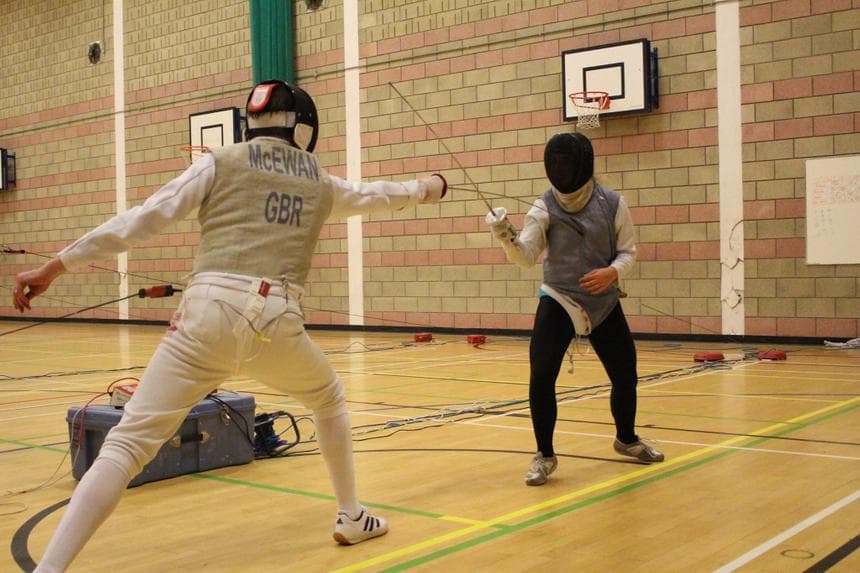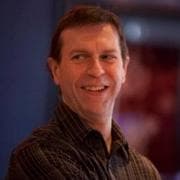A Leadership Journey: The Sporting Years (Part 1)

My sport is fencing and it’s the best sport in the world. In the early days, it had the added bonus that leadership or authority never featured in it for me – I could get to where I wanted to, solely on my own efforts, measured by skill, strength and sharpness of wits against my peers. That changed in 2008.
I had retired from competitive fencing in 1981, then came back as a veteran (over 40 age group) in 2005, to compete for Scotland in the Commonwealth Veterans Fencing Championships (CVFC). The catalyst for change was the Celtic Challenge in 2008. I did well individually, but Scotland missed out on winning the overall trophy – the much-coveted Black Dragon – simply because we didn’t have team entries in all weapons. We had 4 out of 6, and a nation gets points for each entry, and none for a no-show. If we’d just had the others, even if in those 2 they had come last, it would have been enough to win. 2008 was generally a bad year in life and in society, and I suddenly realised there was a greater good here – if I could lead Scotland to victory on an international stage, then the world would be a better place for me and for the fencers who chose to join me! So – I had one of the key elements of leadership – motivation – but I needed the other key element – vision. To be effective, the vision has to be one that people can believe is achievable, and for people to believe that, I need to believe it as well. I focussed on the short-term, specifically, two events in 2009.
The key events were the Veterans 4 Nations – Scotland, England, all Ireland and Wales, to be held in Belfast – and CVFC, to be held in Jersey. Scotland had a fairly bleak record at the 4 Nations – wooden spoon in 2007, no show in 2008, so my view was (in the words of the song) “the only way is up”. The situation with CVFC was a bit more complicated – Scotland had some results in 2005 and 2007 (I had a Silver and a Bronze from 2005), but those events had been run by the Commonwealth Veterans Fencing Association (CVFA) rather than the official Commonwealth Fencing Federation (CFF), while the 2009 event would be run by CVFA, but fully endorsed by CFF, and with CFF medals up for grabs as a step towards fully integrating Veterans fencing into CFF as another age group. This set my vision – since I was turning 50 that year, my objective was to get a Commonwealth medal, and the vision for Scotland was to medal in each weapon.
For both events, I went back to the basics of leadership – set out the vision, and motivate people to achieve it, with the added challenge that I could only do this remotely. At some point, I will dig out and publish some of the emails from that time, but I was staggered by the response I got. One was in relation to how I aimed to motivate people. I had decided that the approach taken previously to building a Scotland Veterans team was never going to work – it was based on persuading formerly successful fencers like myself to come back into the sport. Clearly, it had worked on me, but I had my own reasons for coming back, which were very strongly related to an expanding waistline due to the free cooked breakfasts and ice-cream snacks available during my work on NatWest Integration at RBS, plus the follow-on celebrations during the Group Value Programme. When I found that others from my era weren’t interested in coming back, I looked at what had motivated those that had joined the squad. The overwhelming factor was the desire to represent their nation.
Some key individuals:
- Viv Frith had started fencing late in life, found she enjoyed it, and wanted to enter the Celtic Challenge representing Scotland, so had got a request to me to ask if she could be allowed to do so, on the basis of being half-Scottish – I was happy to confirm
- Michele Narey was in a similar situation as Viv, and had actually been turned down by England for selection, so was fiercely determined to represent Scotland as the other half of her heritage
- Sheila Anderson, who – having had an outstanding record as one of Scotland’s best fencers in earlier years – had made sporadic comebacks on the international scene, but consistently turned out for Veterans events
- Julian Ghosh and Barry Coulter desperately wanted to represent their nation at Sabre, so I had made up the numbers at the 2007 4 Nations, fencing Sabre for the first time as well as Foil and Epee, so that we could have a team. Barry and Julian fenced well, and I had a lucky break against the remarkable Richard Bonehill (who went on to be World Champion in 2010) by exploiting his ingrained habits for stage fighting (latterly as the coach on Sharpe, but as many know, the best (my opinion) extra on the first Star Wars series), so the Sabre team ended up 2nd in the event
That particular event (2007 4 Nations Sabre) was one that shaped all our thinking about what we wanted from life, due to the tragic death of Justin Smith. The notice at http://www.veterans-fencing.co.uk/news/feb2007.pdf provides more details, but the key thing at the time was the uplifting response from his Welsh teammates, and the supportive response from his family. It reinforced my belief that people need to have the motivation first. I worked on this in the messages to the squad in the run up to the Belfast 4 Nations, with a totally unanticipated – but very welcome – side effect.
